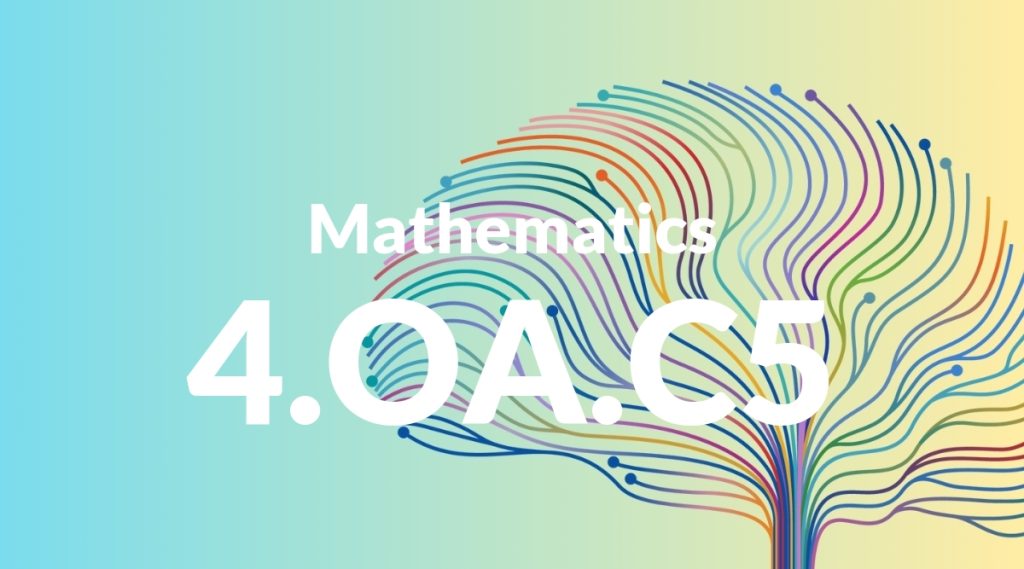Standard: 4.OA.C5 – Generate a number or shape pattern that follows a given rule. Identify apparent features of the pattern that were not explicit in the rule itself. For example, given the rule “Add 3” and the starting number 1, generate terms in the resulting sequence and observe that the terms appear to alternate between odd and even numbers. Explain informally why the numbers will continue to alternate in this way.
Grade level: Grade 4
Subject: Mathematics
Domain: Operations & Algebraic Thinking
Teacher Overview
This standard focuses on helping students generate and analyze patterns that follow a specific rule. It is important because it lays the groundwork for algebraic thinking and helps students develop critical problem-solving skills. Ensure students understand basic arithmetic operations and can recognize simple patterns in numbers and shapes.
Students will be able to analyze and generate more complex patterns, including those involving algebraic expressions and functions, enhancing their problem-solving skills and mathematical reasoning.
Common Misconception 1
Some students might think that all patterns follow a straightforward addition rule. This is incorrect because patterns can involve various operations, including subtraction, multiplication, or alternating operations.
Intervention 1
Use diverse examples and hands-on activities to show patterns involving different operations. Encourage students to explore and discuss these patterns to deepen their understanding.
Common Misconception 2
Another common misconception is that the rule provided will describe all features of the pattern. This is incorrect because some features may not be explicitly stated and need to be discovered through analysis.
Intervention 2
Guide students through activities that require them to identify implicit features of patterns. Use questioning techniques to prompt deeper thinking and exploration.
Prerequisite Knowledge
Students should be comfortable with basic addition and subtraction, understand the concept of sequences, and have experience recognizing simple patterns in numbers and shapes.
Subsequent Knowledge
After mastering this standard, students will be able to analyze more complex patterns, including those involving multiplication and division, and apply their understanding to algebraic expressions and functions.
Instructional Activities
- Create a sequence of numbers following a given rule and identify implicit patterns.
- Design a shape pattern using a specific rule and discuss its features.
- Use manipulatives to explore different types of patterns and their rules.
- Engage in group activities where students create and analyze patterns together.
- Solve real-world problems involving patterns, such as predicting trends or designing tessellations.




